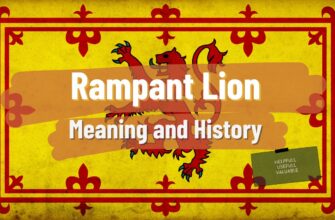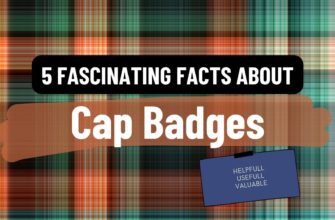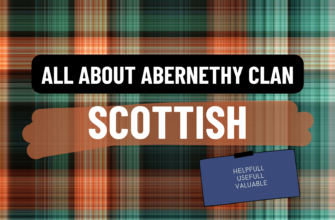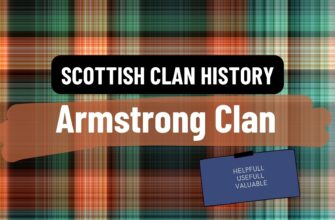- What is the Great Kilt
- History of the Great Kilt
- Ancient Beginnings
- The Great Kilt Through the Ages
- Revival and Renaissance
- Modern Times and the Great Kilt
- The Great Kilt in the World’s Eye
- Understanding the Great Kilt
- The Anatomy of Tradition
- The Great Kilt Fabric: A Canvas of Culture
- Craftsmanship in Every Pleat
- Tartans: The Language of the Kilt
- The Great Kilt in Contemporary Craft
- Types of Great Kilt Fabric
- The Weave of Heritage
- Wool: The Heart of the Great Kilt
- Dyeing: The Colorful Tradition
- Choosing the Right Fabric
- Sustainability and Fabric Choice
- Cultural Significance of the Great Kilt
- The Emblem of Scottish Identity
- Ceremonial Splendor
- The Great Kilt in Literature and Film
- A Modern Reclamation
- The Global Reach of the Great Kilt
- How to Wear a Traditional Great Kilt
- The Art of Draping
- Accessorizing the Great Kilt
- The Upper Half: Complementing the Kilt
- Variations in Style
- The Final Touch: The Kilt Pin
- Great Kilt for Sale: A Buyer’s Guide
- Navigating the Marketplace
- Online Retailers: A World of Choice
- Authenticity and Craftsmanship
- The Wool Factor
- Measuring Matters
- Reading Reviews
- Price Points
- After-Sale Services
- Maintaining Your Great Kilt
- Regular Care and Cleaning
- Dealing with Stains
- Storing Your Great Kilt
- Professional Cleaning
- Ironing and Pleat Care
- Repairs and Preservation
- Moth Prevention
- Customer Reviews and Testimonials
- Celebrating Tradition: Stories from Kilt Wearers
What is the Great Kilt
The great kilt has long been a distinguished emblem of Scottish heritage, weaving its presence through the tapestry of history with every pleat and fold. This article aims to unravel the enigmatic charm of the Highland Tartan Wrap, leading enthusiasts on a journey through the ages—exploring its origins, its significance, and how it has come to be a proud display of Scottish culture.

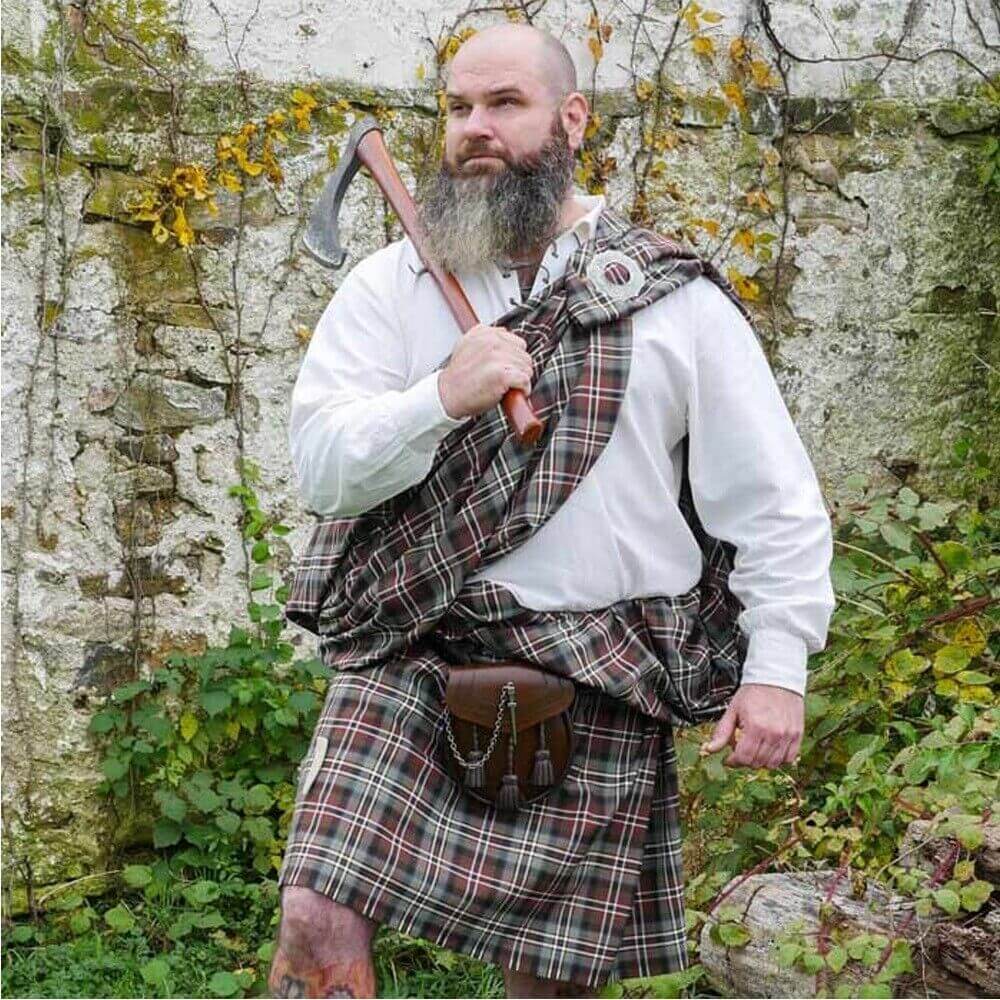
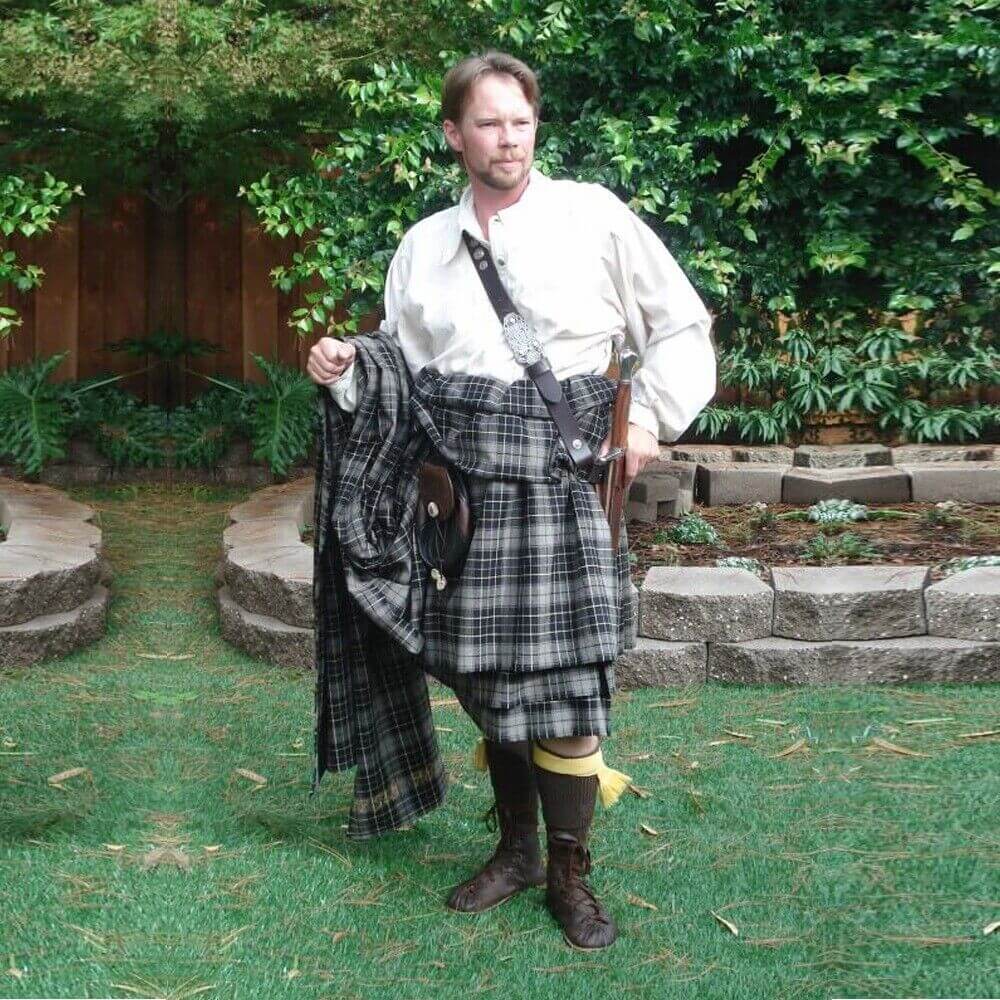


Envision a garment that is more than mere attire; it’s a storyteller, a protector, and a declaration of identity. The great kilt—or as the Scots call it, the ‘feileadh mòr’—has held this venerable status for centuries. From the misty highlands of ancient Scotland to the vibrant gatherings of today, the Traditional Scottish Skirt remains a timeless piece, connecting the past with the present.
In this extensive guide, we delve into every aspect of the great kilt. From its wool kilt fabric that has shielded Scots from the biting cold to the vibrant tartans that tell the tale of clans and kinship, each thread holds a story waiting to be told. As you navigate through this article, you’ll find insights into selecting the finest Celtic Warrior Garb for sale, the craftsmanship that goes into creating a traditional kilt, and tips on how to don this magnificent attire with the poise and dignity it deserves.

Whether you’re seeking to purchase a great kilt to honor your ancestors or simply to partake in the elegance of Scottish attire, this article is your comprehensive manual. We will guide you through the labyrinth of options available, ensuring that when you choose to buy a traditional kilt, you are not just buying a piece of clothing—you are owning a fragment of history.
Before you embark on this journey, let’s take a moment to appreciate the significance of what you’re about to explore. The Feileadh Mor (Gaelic term) is not just fabric and folds; it’s a legacy. And as we unfurl the layers of its grandeur, we invite you to immerse yourself in the lore and allure of Scotland’s most iconic garment.
History of the Great Kilt
Ancient Beginnings
The tale of the Ancient Gaelic Dress begins in the verdant landscapes of Scotland, where the earliest versions of this garment appeared during the 16th century. Originally known as the ‘feileadh mòr’ or ‘big wrap,’ it was a multifunctional piece, serving the Highlanders not only as attire but also as bedding in the harsh, unforgiving climes.

The Great Kilt Through the Ages
As time marched on, the great kilt evolved. By the 17th and 18th centuries, it had become a symbol of Scottish resistance, a flag worn in defiance of external pressures and edicts. The Act of Proscription of 1746, aimed at suppressing Highland culture, inadvertently elevated the traditional kilt to a potent emblem of national identity.

Revival and Renaissance
The 19th century witnessed a revival of the Scottish Clan Tartan, thanks in part to the Romantic movement and Queen Victoria’s fascination with all things Scottish. The traditional kilt became synonymous with Scottish pride, a pride that continues unabated in the 21st century.

Modern Times and the Great Kilt
Today, the Historic Highland Garment is not only a vestige of the past but also a living tradition. It graces weddings, formal events, and Highland games, a testimony to its enduring legacy. The wool kilt remains the fabric of choice, a link to the Highlanders of yore.

The Great Kilt in the World’s Eye
The Belted Tartan Cloth has transcended its origins, becoming a global icon of heritage and history. Its presence in media and at global gatherings has ensured that the kilt remains a respected and recognized garment far beyond Scottish shores.
Understanding the Great Kilt
The Anatomy of Tradition
At its core, the Gaelic Battle Attire is a marvel of design, a length of woolen fabric that can measure up to eight yards long. It is worn with meticulous pleating, wrapped around the wearer’s body, and secured at the waist, allowing for a draped layer that can be thrown over the shoulder.

The Great Kilt Fabric: A Canvas of Culture
The Plaid Gaelic Ensemble fabric is more than mere material; it’s the canvas upon which the Scottish heritage is painted. Traditionally, this fabric was hand-woven wool, dyed using natural substances extracted from the Scottish landscape—lichens, mosses, and the famous woad plant, contributing to the distinctive hues seen in traditional kilts.
Craftsmanship in Every Pleat
The crafting of a wool great kilt is an art form handed down through generations. The pleating of the kilt is an intricate process, one that requires skill and patience. Each pleat is folded by hand, measured and created to suit the individual who will don the kilt, ensuring a perfect fit and a dignified silhouette.
Tartans: The Language of the Kilt
A vital aspect of the Old Scottish Plaid is its tartan pattern, a series of horizontal and vertical bands in multiple colors that intersect to form a distinctive checked pattern. Tartans were historically associated with specific regions or clans, and today they serve as a visual lexicon of Scottish lineage.
The Great Kilt in Contemporary Craft
While the essence of the traditional kilt remains rooted in tradition, contemporary kilts have embraced modern techniques without losing the essence of their heritage. Today’s Traditional Highland Wrap for sale often blend traditional methods with modern conveniences, offering longevity, comfort, and style.
Types of Great Kilt Fabric

The Weave of Heritage
The Classic Scottish Kilt fabric comes in various weaves, each with its own story and purpose. The twill weave, characterized by its diagonal ribs, is traditional and durable, making it a popular choice for wool kilts. This weave provides the kilt with its robust texture and longevity, essential for withstanding the elements of the Scottish Highlands.
Wool: The Heart of the Great Kilt
Wool is the quintessential material for the Heathered Highland Drapery. Its natural insulation properties, breathability, and resilience make it the ideal choice. The quality of wool can vary, from the rough, thick textures of traditional kilts to the finer, softer wool used in contemporary versions that prioritize comfort without compromising on authenticity.
Dyeing: The Colorful Tradition
The hues of a Historic Highland Dress hold meaning and history. Originally, the colors came from local plants and minerals, reflecting the natural Scottish palette. Today, while synthetic dyes offer a broader spectrum of colors, many still prefer the subtle, earthy tones of the natural dyes that give the traditional kilts their unique character.
Choosing the Right Fabric
When searching for a great kilt for sale, the selection of fabric is crucial. It must resonate with the wearer’s needs, whether that’s for historical reenactments, formal occasions, or everyday wear. The weight of the fabric also plays a significant role, with heavier kilts offering a more authentic drape and lighter ones suited for comfort and ease of movement.
Sustainability and Fabric Choice
In modern times, there’s a growing emphasis on sustainable and ethically sourced fabrics. Environmentally conscious kilt enthusiasts can find Belted Gaelic Robe made with organic wool, ensuring their garment is eco-friendly and supports sustainable practices.
Cultural Significance of the Great Kilt

The Emblem of Scottish Identity
The great kilt is more than a piece of clothing; it’s a symbol of Scottish identity, a garment that has become synonymous with the spirit of Scotland. Its significance stretches far beyond its practical use, becoming an emblem of kinship, tradition, and national pride.
Ceremonial Splendor
In the realm of ceremonies, the Full-Length Tartan Cloak takes center stage. Be it weddings, state functions, or cultural celebrations, the Traditional Highland Attire is donned as a mark of honor and respect for Scottish ancestry. It’s a garment that commands attention and conveys a sense of solemnity and celebration.
The Great Kilt in Literature and Film
The great kilt has made its mark on popular culture, featuring prominently in literature and film. It often serves as a visual shorthand for Scottish heritage, instantly recognizable and evocative of the rugged landscape and storied past of Scotland.
A Modern Reclamation
In contemporary times, the great Plaid Wrap has witnessed a resurgence, embraced by a new generation keen on reclaiming and celebrating their cultural heritage. It’s a testament to the kilt’s adaptability and enduring appeal that it has found a place in modern fashion while remaining true to its roots.
The Global Reach of the Great Kilt
The allure of the Ancient Scottish Attire transcends borders, attracting interest from around the globe. It has become a piece of cultural diplomacy, an item of clothing that encapsulates the essence of Scottish culture and shares it with the world.
How to Wear a Traditional Great Kilt

The Art of Draping
The process of wearing a great Scottish Skirt is an art that harks back to its origins. It starts with laying the fabric out and carefully folding the pleats by hand—a ritual that connects the wearer to the garment’s history. The Tartan Garment is then wrapped around the waist, ensuring the pleats align at the back, and secured with a belt.
Accessorizing the Great Kilt
To complete the attire, accessories play a vital role. A sporran, a type of pouch, hangs in front of the kilt for practicality and adornment. Knee-high socks, called hose, are paired with ghillie brogues, traditional Scottish shoes. For formal occasions, a sgian-dubh—a small, ornamental knife—is tucked into the top of the hose.
The Upper Half: Complementing the Kilt
While the lower half of the outfit draws the most attention, the upper half is equally important. A formal jacket, like the Prince Charlie or Argyll, is often chosen for dress events. For a casual look, a simple Jacobite shirt can lend an air of rugged simplicity.
Variations in Style
Though the Celtic Tartan Garment has a standard way of being worn, personal touches and variations are common. Some may choose to wear a fly plaid, a piece of tartan cloth draped over the shoulder and fastened with a brooch, adding to the regality of the ensemble.
The Final Touch: The Kilt Pin
A kilt pin is not merely decorative; it also serves to weigh down the front apron of the kilt, preventing it from flapping open. This small but significant detail is often chosen to reflect the wearer’s clan or personal style.
Great Kilt for Sale: A Buyer’s Guide
Navigating the Marketplace
The journey to owning a great kilt begins with knowing where to look. The marketplace is diverse, with options ranging from specialty Scottish stores to online platforms where you can buy a traditional kilt with ease.
Online Retailers: A World of Choice
Online retailers offer a wide array of great kilts for sale. Platforms like Amazon provide a convenient way to explore different styles and fabrics. Discover the perfect great kilt on Amazon
Authenticity and Craftsmanship
When selecting a Gaelic Feileadh Mòr, authenticity is key. Seek out sellers who specialize in Scottish great kilts, ensuring the garment’s craftsmanship honors the traditional methods.
The Wool Factor
A wool great kilt is the epitome of tradition and quality. When shopping, pay attention to the type of wool and the weave of the fabric, as these factors significantly influence the kilt’s look and feel.
Measuring Matters
Fit is crucial when wearing a great kilt. Accurate measurements will ensure your kilt fits perfectly and drapes as intended. Retailers often provide measuring guides to assist with this process.
Reading Reviews
Customer reviews can be incredibly insightful. They offer real-world experiences and can highlight the best places to buy a great kilt.
Price Points
Prices for a Belted Plaid can vary widely. Set a budget, but remember that a higher price often reflects superior fabric quality and craftsmanship.
After-Sale Services
Consider retailers that offer after-sale services like alterations or advice on care and maintenance. These services can enhance the longevity of your great kilt.
Maintaining Your Great Kilt
Regular Care and Cleaning
Proper care is essential to preserve the quality and longevity of your Highland Kilt. Wool kilts should not be washed frequently as it can damage the fabric. Spot cleaning and airing out the kilt can be effective for minor soiling.
Dealing with Stains
If your great kilt encounters a stain, it’s crucial to act quickly. Blotting the stain gently with a damp cloth can prevent it from setting. Avoid rubbing as it can cause the wool fibers to felt.
Storing Your Great Kilt
When not in use, store your Scottish Great Kilt in a cool, dry place. Avoid plastic covers as they can trap moisture, leading to mildew. A breathable garment bag is ideal for preventing dust accumulation while allowing air circulation.
Professional Cleaning
For deeper cleaning, it’s advisable to seek professional cleaning services that specialize in wool and tartan fabrics. They have the expertise to handle the delicate great kilt fabric without causing damage.
Ironing and Pleat Care
If your Traditional Tartan Plaid needs ironing, use a low heat setting and a pressing cloth to avoid direct contact with the wool. The pleats should be ironed gently, maintaining their crispness without flattening them completely.
Repairs and Preservation
Should your great kilt require repairs, consult a professional tailor who understands traditional Scottish kilts. Preserving the integrity of the kilt often involves traditional techniques that a specialized tailor will be familiar with.
Moth Prevention
Wool is susceptible to moth damage. Using natural repellents like cedar or lavender can help keep moths at bay. Regularly check and clean the area where the kilt is stored to prevent infestation.
Customer Reviews and Testimonials
Celebrating Tradition: Stories from Kilt Wearers
Hearing from those who have experienced the majesty of the great kilt first-hand offers invaluable insights. Here, customers share their stories, illustrating the garment’s impact on their lives.

